Approaching minimalist style for the first time can feel daunting.
And that's understandable.
Here's an easy cheat sheet about what minimalist style is, its history, and some quick tips to get you started on your journey.
We live in a world that values rampant consumerism. Every time we turn around we're supposed to buy something else. Something new. Something different. The problem is that we have so many choices that the choice itself becomes stressful.
How many times have you stood in front of an overstuffed closet bristling with clothes, overwhelmed, and you say, I have nothing to wear?
That's the paradox of our modern lives. We have so many choices that it's only in reduction, the lack of choices, that we can find a moment's solace.
Imagine opening that same closet, only this time, instead of exploding outward in hangers and clothes you never wear, you find a handful of carefully selected garments hanging with room to spare. The space between the pieces gives them room to breathe, drape, flow the way the designers intended. And you love each and every piece. You selected each one with care. No matter which piece you choose, you know it fits you perfectly, the construction is the best you can afford, and the quality will make it last for years to come.
Did you breathe a little sigh of relief? This is minimalism.
 Choose to fill your space with pieces that you love (we love these bangles by Evocateur), that bring value and joy to your life. The scarf that feels so silky around your neck you imagine you're Katharine Hepburn in an old Hollywood movie. Or the sleek-lined shift dress that fits your body so precisely, that no matter what kind of mood you might be in, just putting it on will lift your spirits. Of course, things can't bring value to your life. Only you can do that.
Choose to fill your space with pieces that you love (we love these bangles by Evocateur), that bring value and joy to your life. The scarf that feels so silky around your neck you imagine you're Katharine Hepburn in an old Hollywood movie. Or the sleek-lined shift dress that fits your body so precisely, that no matter what kind of mood you might be in, just putting it on will lift your spirits. Of course, things can't bring value to your life. Only you can do that.
But by learning to value your space, you're valuing yourself, your time, your body, your own self-awareness. You're giving yourself permission to say no.
And you're making room in your life so when you do find those things that bring you joy- few and far between as they might be - you can say yes.
Let's look at the origins of minimalist style.
Mies van der Rohe Barcelona Pavilion
Miminimalism began in industry.
German architect Mies Van der Rohe his modern, minimal style aesthetic around the principal assertion "less is more." His buildings, with their back-to-basics functionality, revolutionized post-World War I architecture, and Mies' famous quote is now seen as a cornerstone of the minimalist movement.
An innovative creator, Buckminster Fuller's goal was “doing more with less." Fuller designed and produced multiple lines of technology including modular apartments, a three-wheeled car, and prefabricated bathrooms, all with the purpose of making life simpler and easier for the world around him.
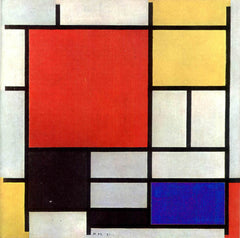 Artistically, minimalism derives from the De Stijl movement with its emphasis on absolute reductionism down to the essentials of style and color. Combined with Mies Van der Rohe's architectural style to include modern materials like plate glass and industrial steel, the result was open space and minimal framework.
Artistically, minimalism derives from the De Stijl movement with its emphasis on absolute reductionism down to the essentials of style and color. Combined with Mies Van der Rohe's architectural style to include modern materials like plate glass and industrial steel, the result was open space and minimal framework.
Minimalist style is a part of our daily life.
Take a moment to look at the devices around you. Chances are good that your phone is a sleek little device and you're using the internet from another clean lined user interface. There's an excellent chance that the architectural details of your home are minimal as well, not the rococo and gilded flourishes that once characterized affluence.
By the early 1960's, minimalism had spilled over into fashion.
The defining characteristics of minimalist style in fashion:
Non-emotive design
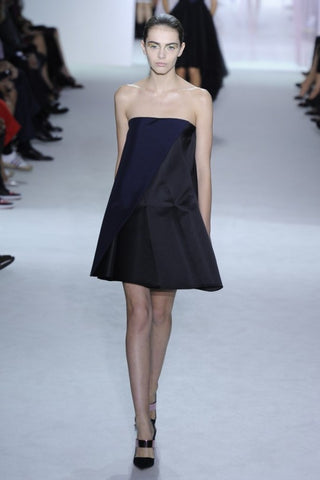 First let's define emotional design, meaning that a piece is created with the purpose of eliciting an emotional response. A designer can't create an organic emotional response, but she can set the stage for an emotional response to occur. In minimalist designs, simple lines and geometric prints are combined with extreme simplicity. The choice of material is often used to demonstrate minimalism's differences from couture design. Opting for traditionally inexpensive materials like boiled wool or PVC instead of hand sewn feathers, a different statement is made as each piece walks the runway. (Left, Raf Simons for Dior)
First let's define emotional design, meaning that a piece is created with the purpose of eliciting an emotional response. A designer can't create an organic emotional response, but she can set the stage for an emotional response to occur. In minimalist designs, simple lines and geometric prints are combined with extreme simplicity. The choice of material is often used to demonstrate minimalism's differences from couture design. Opting for traditionally inexpensive materials like boiled wool or PVC instead of hand sewn feathers, a different statement is made as each piece walks the runway. (Left, Raf Simons for Dior)
Reductivism
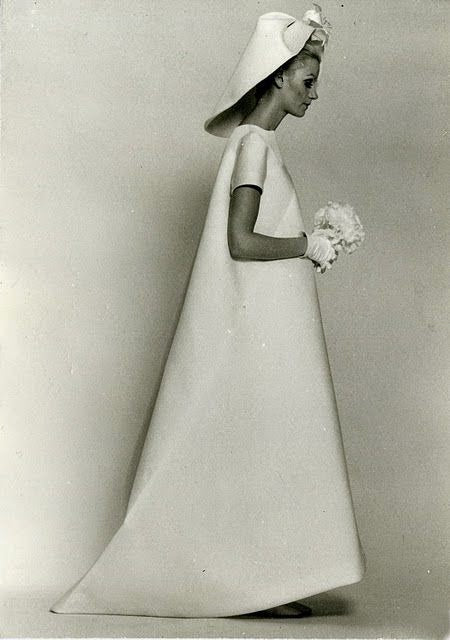 Not only are minimalist pieces designed as a blank canvas, but their very construction is deceptively simple. They should appear effortless and often contain invisible seams to maintain the illusion. Balenciaga's 1967 wedding dress is a prime example of the invisible seaming, simple shape, and the way the shape hides the traditional female silhouette.
Not only are minimalist pieces designed as a blank canvas, but their very construction is deceptively simple. They should appear effortless and often contain invisible seams to maintain the illusion. Balenciaga's 1967 wedding dress is a prime example of the invisible seaming, simple shape, and the way the shape hides the traditional female silhouette.
Rejection of the traditional female body
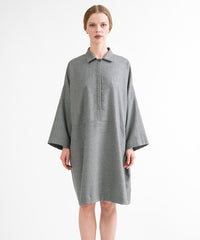 Like this day dress by Shosh, the shapes in minimalist designs don't conform to the body. Using the principals of space while rejecting "form over function," minimalist style rejects traditional gender roles. The female form is re-created through gender-neutral sculptural details that exist independent of the female body and its traditional silhouette. As such, minimalist style rejects the sexuality inherent in other design styles, allowing the wearer to form their own identity.
Like this day dress by Shosh, the shapes in minimalist designs don't conform to the body. Using the principals of space while rejecting "form over function," minimalist style rejects traditional gender roles. The female form is re-created through gender-neutral sculptural details that exist independent of the female body and its traditional silhouette. As such, minimalist style rejects the sexuality inherent in other design styles, allowing the wearer to form their own identity.
Accessibility
Just as minimalist style shuns couture's outrageously expensive, hand sewn details, it also allows for the democratization of style. Rich or poor, young or old, regardless of gender identity or body shape, minimalism is available to all of us.
How to transition your wardrobe into a more minimalist style:
- If you don't love a piece, don't keep it.
- The same idea applies when you're getting dressed. Avoid needless add-ons. Less is more.
- But make the details count.
- Look for pieces that are functional, comfortable, and easy to use. Meaning: it shouldn't take you half an hour to navigate a series of tiny straps.
- Find neutral pieces that allow your personal style to shine through.
- When you do use color, consider the mood created by that color. Is it one that you enjoy? Does it work well with other colors in your wardrobe, outfit, or home? Remeber, details.
- Look for quality construction and materials that are long lasting.
- The less design, the better (at least externally ... remember those invisible seams?).
- Watch for innovative, original pieces.
- White space is vital. It gives you room to breathe whether it's in a room, a closet, or an outfit.

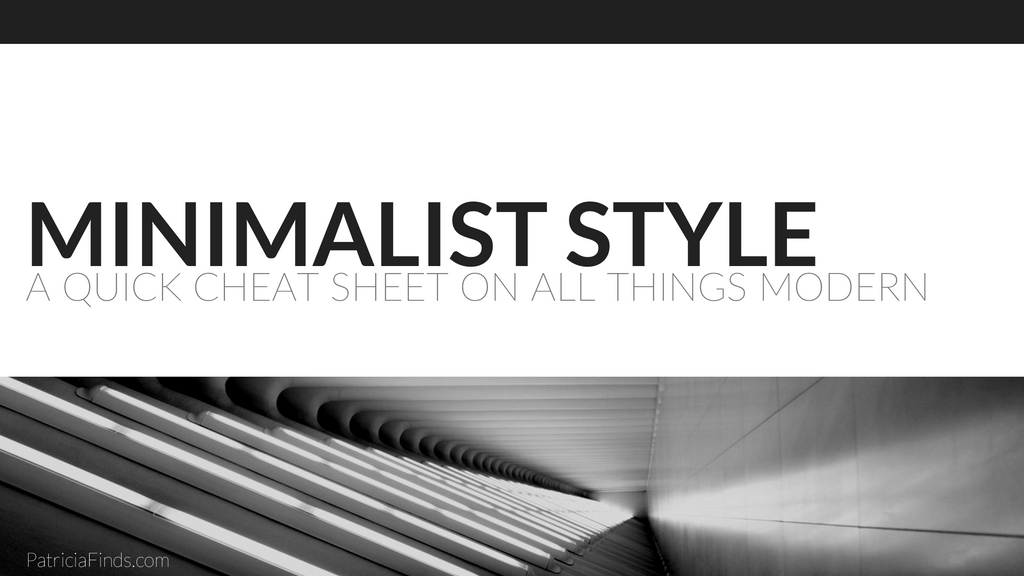
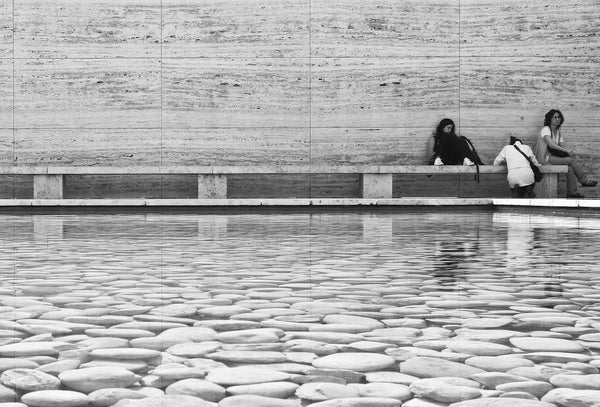



Comments (0)